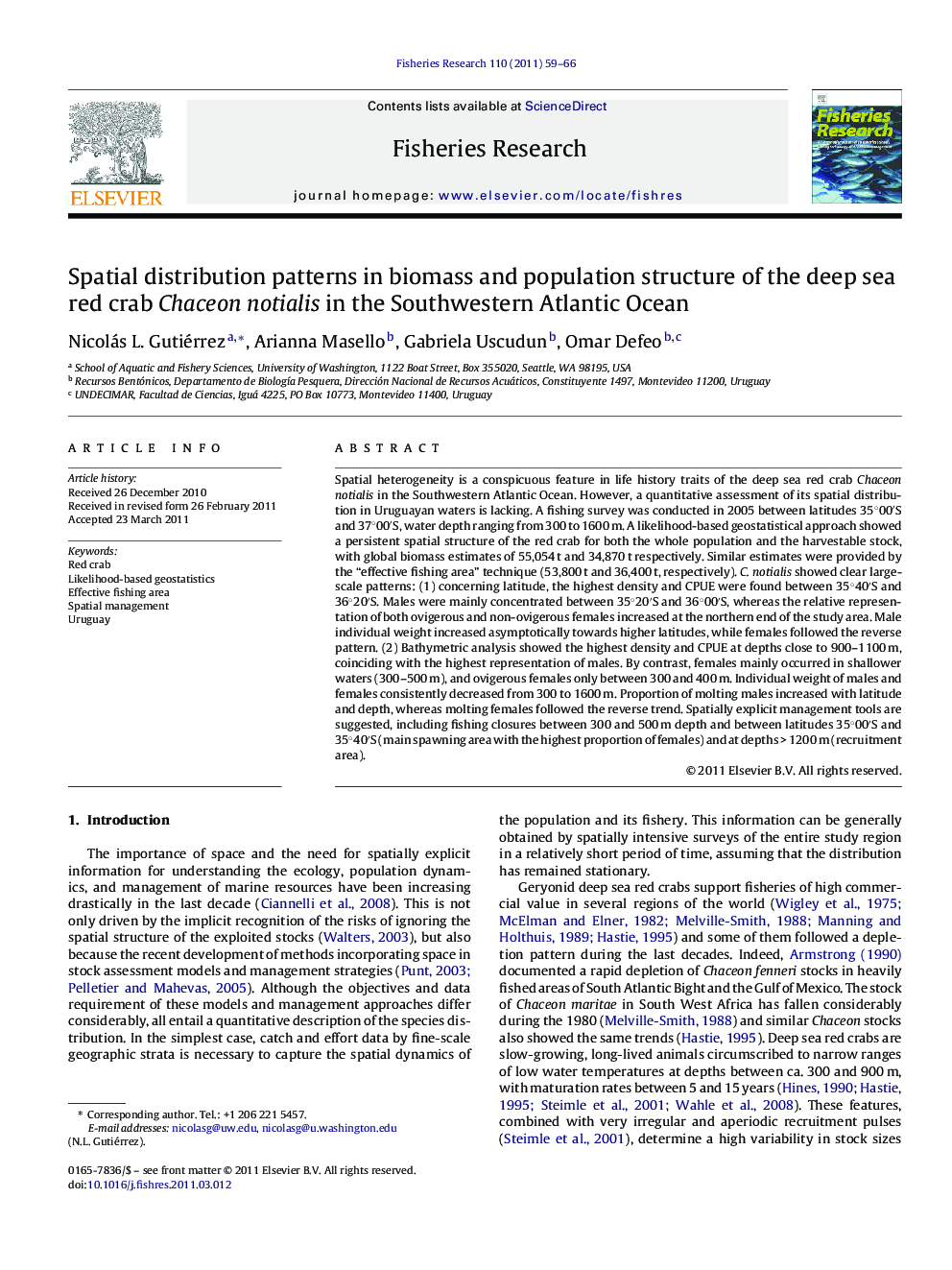| کد مقاله | کد نشریه | سال انتشار | مقاله انگلیسی | نسخه تمام متن |
|---|---|---|---|---|
| 4543624 | 1327158 | 2011 | 8 صفحه PDF | دانلود رایگان |

Spatial heterogeneity is a conspicuous feature in life history traits of the deep sea red crab Chaceon notialis in the Southwestern Atlantic Ocean. However, a quantitative assessment of its spatial distribution in Uruguayan waters is lacking. A fishing survey was conducted in 2005 between latitudes 35°00′S and 37°00′S, water depth ranging from 300 to 1600 m. A likelihood-based geostatistical approach showed a persistent spatial structure of the red crab for both the whole population and the harvestable stock, with global biomass estimates of 55,054 t and 34,870 t respectively. Similar estimates were provided by the “effective fishing area” technique (53,800 t and 36,400 t, respectively). C. notialis showed clear large-scale patterns: (1) concerning latitude, the highest density and CPUE were found between 35°40′S and 36°20′S. Males were mainly concentrated between 35°20′S and 36°00′S, whereas the relative representation of both ovigerous and non-ovigerous females increased at the northern end of the study area. Male individual weight increased asymptotically towards higher latitudes, while females followed the reverse pattern. (2) Bathymetric analysis showed the highest density and CPUE at depths close to 900–1100 m, coinciding with the highest representation of males. By contrast, females mainly occurred in shallower waters (300–500 m), and ovigerous females only between 300 and 400 m. Individual weight of males and females consistently decreased from 300 to 1600 m. Proportion of molting males increased with latitude and depth, whereas molting females followed the reverse trend. Spatially explicit management tools are suggested, including fishing closures between 300 and 500 m depth and between latitudes 35°00′S and 35°40′S (main spawning area with the highest proportion of females) and at depths > 1200 m (recruitment area).
► We provide critical information on spatial variations in the deep sea red crab Chaceon notialis population characteristics.
► We estimate both total biomass and its harvestable fraction (i.e., commercial individual sizes) by means of likelihood-based geostatistics and the effective fishing area method.
► We found spatial segregation by sex, sizes and in molting and non-molting individuals.
► Spatially explicit tools are suggested for appropriate fishery management.
Journal: Fisheries Research - Volume 110, Issue 1, June 2011, Pages 59–66